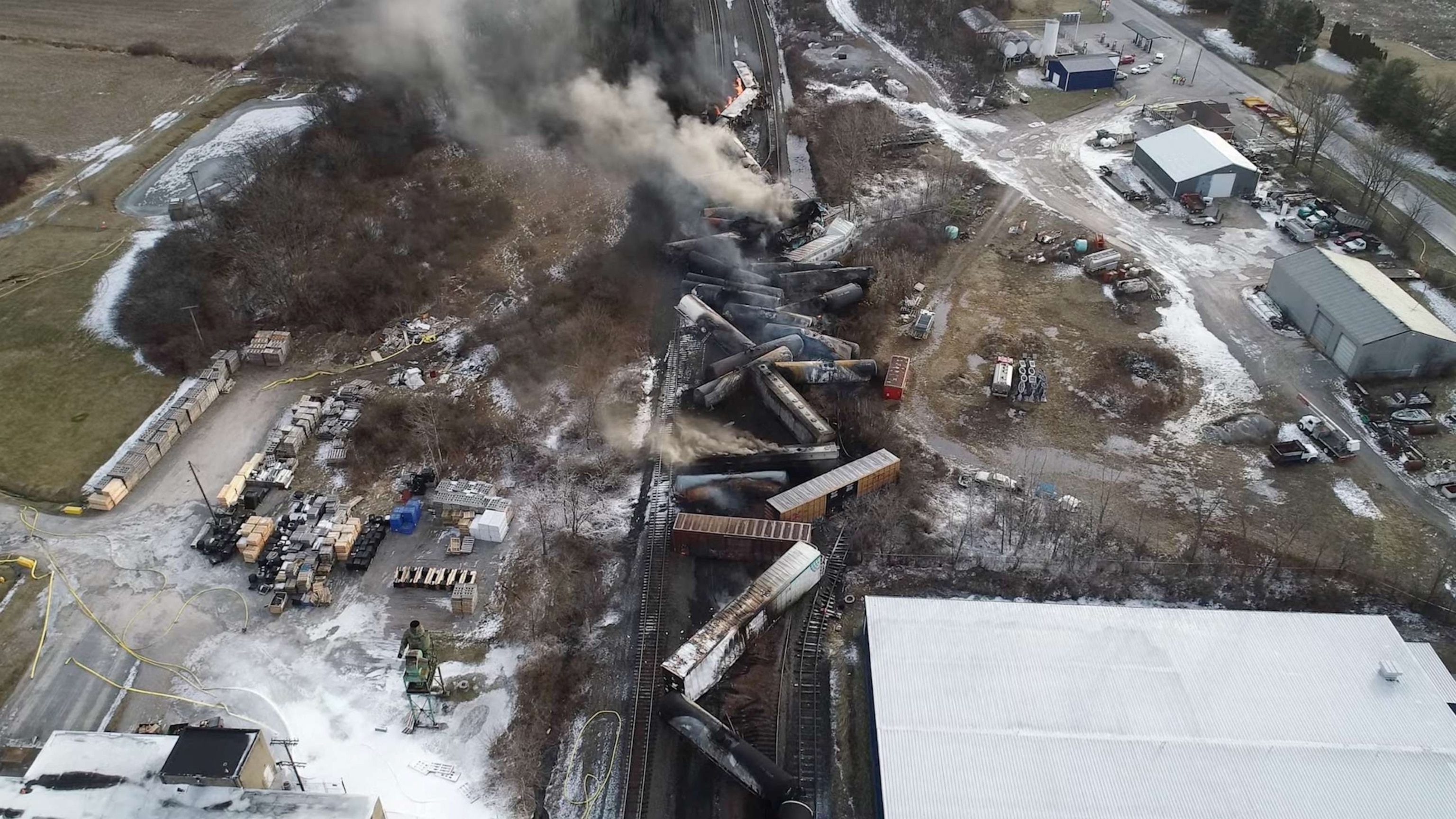The Aftermath Of The Ohio Train Derailment: Prolonged Toxic Chemical Exposure In Buildings

Table of Contents
Persistent Chemical Residues in Homes and Businesses
The initial evacuation and cleanup efforts following the derailment focused on immediate threats. However, the porous nature of many common building materials means that vinyl chloride and other released chemicals have likely permeated walls, carpets, and other surfaces. This presents a significant risk of prolonged toxic chemical exposure for residents and business owners.
- The porous nature of building materials allows for chemical absorption. Vinyl chloride, in particular, is easily absorbed by materials like drywall, carpet padding, and even wood. This means that even after the initial air quality improves, the chemicals may remain trapped within building materials, slowly leaching out over time.
- Vinyl chloride can linger in the air and on surfaces for extended periods. Studies have shown that volatile organic compounds (VOCs) like vinyl chloride can persist in indoor environments for weeks, months, or even longer, depending on factors like ventilation and the material's porosity.
- Cleaning efforts may not be sufficient to eliminate all traces of contamination. Simple cleaning and airing out may not be enough to remove deeply embedded chemicals from building materials. More intensive remediation techniques might be necessary to ensure the safety of occupants.
- Testing for chemical residues is crucial for assessing the level of risk. Independent testing for vinyl chloride contamination and other released chemicals in homes and businesses is essential to determine the extent of the problem and inform appropriate remediation strategies. This testing should encompass air, surface, and potentially even building material samples. Without thorough testing, the true extent of prolonged toxic chemical exposure remains unknown.
Health Impacts of Long-Term Exposure
The health impacts of long-term exposure to the chemicals released in the Ohio train derailment are a serious concern. While acute effects were immediately apparent in some individuals, the potential for chronic health issues from prolonged toxic chemical exposure is a significant and growing worry.
- Respiratory problems (asthma, bronchitis): Inhalation of vinyl chloride and other toxins can lead to various respiratory illnesses, both in the short and long term.
- Cancer risks (liver, lung, brain): Vinyl chloride is a known human carcinogen, linked to increased risks of liver, lung, and brain cancers. Long-term, low-level exposure may still significantly elevate cancer risks.
- Neurological disorders: Exposure to certain chemicals can lead to a range of neurological problems, including cognitive impairment, memory loss, and other neurological disorders.
- Reproductive issues: Some of the released chemicals can negatively impact reproductive health, potentially leading to infertility or birth defects.
- Increased risk of cardiovascular disease: Studies have shown links between exposure to certain chemicals and an increased risk of heart disease and other cardiovascular problems. Long-term exposure increases this risk.
Insufficient Testing and Remediation Efforts
The response to the long-term consequences of the Ohio train derailment has been criticized for its lack of comprehensive testing and remediation efforts. The scale of the potential contamination necessitates a far more extensive and proactive approach.
- Lack of widespread testing in homes and businesses. Many residents and business owners have reported difficulties obtaining testing for chemical residues in their properties. Without widespread testing, the full extent of the contamination remains unknown.
- Inconsistency in cleanup protocols across different properties. The lack of standardized protocols for cleanup and remediation has led to inconsistencies in the effectiveness of efforts to mitigate prolonged toxic chemical exposure.
- Delayed response in addressing the issue of prolonged exposure. The focus on immediate emergency response has left the longer-term issue of prolonged exposure largely unaddressed. More rapid and decisive action is necessary.
- The need for independent scientific studies to assess long-term risks. Independent, peer-reviewed studies are crucial to accurately assess the long-term health risks associated with prolonged exposure to the released chemicals. This information will inform appropriate public health interventions and remediation strategies.
Legal and Regulatory Responses to Prolonged Toxic Chemical Exposure
The legal and regulatory landscape surrounding the Ohio train derailment and its aftermath is complex and evolving. Residents affected by prolonged toxic chemical exposure are exploring various legal avenues.
- Class-action lawsuits against the railroad company. Several class-action lawsuits have been filed against Norfolk Southern, the railroad company responsible for the derailment, seeking compensation for damages and health impacts caused by prolonged toxic chemical exposure.
- Regulatory oversight of cleanup efforts. Regulatory agencies are responsible for overseeing the cleanup efforts and ensuring they are adequately addressing the concerns related to prolonged toxic chemical exposure. However, the effectiveness of this oversight has been questioned.
- Potential changes to transportation safety regulations. The derailment has prompted calls for stricter regulations and improved safety measures within the transportation industry, particularly regarding the transport of hazardous materials.
- Compensation for residents affected by prolonged exposure. Residents are seeking compensation for medical expenses, property damage, and other losses resulting from prolonged toxic chemical exposure.
Conclusion
The Ohio train derailment's aftermath extends far beyond the immediate emergency response. The lingering presence of toxic chemicals in buildings poses a significant and prolonged threat to public health. Addressing the issue of prolonged toxic chemical exposure requires comprehensive testing, effective remediation strategies, robust legal accountability, and transparent communication from authorities. Residents must advocate for their health and safety, demanding comprehensive testing and remediation to mitigate the long-term effects of this disaster. Don't wait for the problem to worsen; take steps to understand your risk and demand action to mitigate the long-term effects of this disaster. Further investigation into prolonged toxic chemical exposure is crucial to protect the health and well-being of the affected community.

Featured Posts
-
 Miley Cyrus A Daughters Complex Love For A Narcissistic Father
May 06, 2025
Miley Cyrus A Daughters Complex Love For A Narcissistic Father
May 06, 2025 -
 Pratts Blunt Comment On Schwarzeneggers White Lotus Nude Scene
May 06, 2025
Pratts Blunt Comment On Schwarzeneggers White Lotus Nude Scene
May 06, 2025 -
 10 Perfect Mcu Roles For Colman Domingo Beyond Kang
May 06, 2025
10 Perfect Mcu Roles For Colman Domingo Beyond Kang
May 06, 2025 -
 Decoding The Met Gala 2025 Star Style And Competitive Fashion
May 06, 2025
Decoding The Met Gala 2025 Star Style And Competitive Fashion
May 06, 2025 -
 Recession Indicators On Social Media From Lady Gaga To Converse
May 06, 2025
Recession Indicators On Social Media From Lady Gaga To Converse
May 06, 2025
